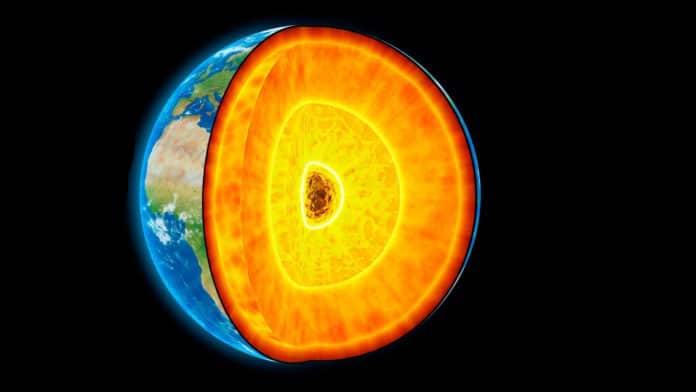Thanks to state-of-art computer simulations, an international team of researchers led by the University of Bristol, could shed light on the properties and behavior of magma found several hundreds of kilometers deep within the Earth. The study helps scientists predict how and where hydrous magmas move within Earth’s interior.
Previously, it was thought that water-rich molten rocks, called hydrous magma, must be denser than the solid rock above them. They are believed to form vast pools of magma at depths close to 400km.
However, this theory was not convincing, as it relies on chemical compositions which are unrepresentative of natural magmas, as known from high-pressure laboratory experiments. Hence, scientists in this study wanted to determine the properties of hydrous magmas to model their behavior to provide more accurate insight into the deep Earth water cycle.
For this study, scientists used ARCHER, the UK’s national supercomputing service, to simulate the physical properties of magma at the extreme conditions on the boundary of Earth’s upper and lower mantle at temperatures up to 1600°C and 250,000 times atmospheric pressure.
This region, at depths of 410-660km, is known as the transition zone and contains solid rocks capable of storing the ocean’s worth of water.
The high water content means rocks just above and below the transition zone will melt at a lower temperature than elsewhere in the Earth’s mantle. This leads to the formation of water-rich or ‘hydrous’ magmas. The simulations show that these hydrous magmas are more buoyant and fluid than previously believed.
Lead author Dr. James Drewitt, Senior Research Associate at the University of Bristol, said, “Using advanced computational techniques to model hydrous magmas down to the atomic-scale, we discovered natural hydrous magmas will be more buoyant and fluid than expected, and will therefore rise through the upper mantle towards the surface, rather like the wax rising in a lava lamp.
“By incorporating these findings into global mantle circulation models, we found that over geological timescales water in hydrous magmas was transported from the lower and mid-mantle towards the upper mantle, resulting in a similar mass of water found in all Earth’s oceans combined evenly distributed throughout the mantle of the present-day Earth.”
Journal Reference:
- James W. E. Drewitt et al. Hydrous silicate melts and the deep mantle H2O cycle. DOI: 10.1016/j.epsl.2022.117408
